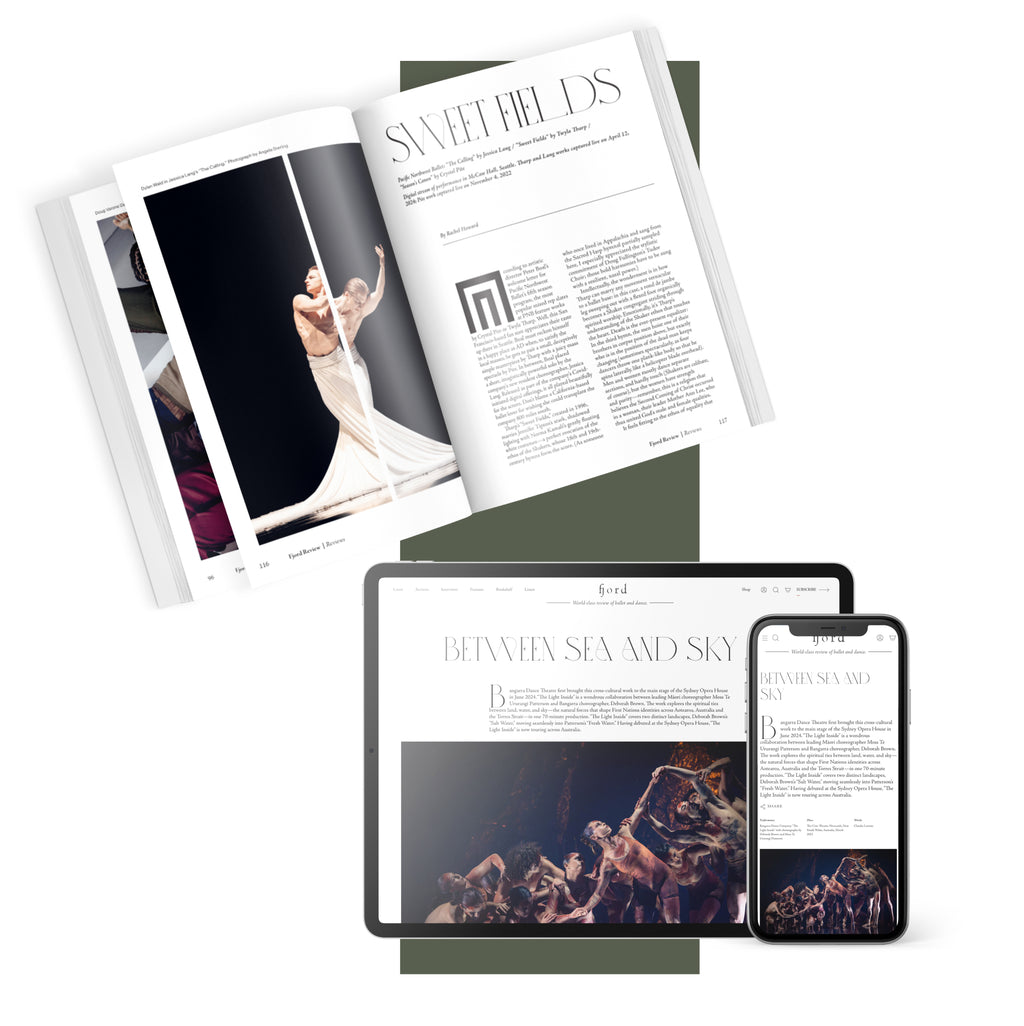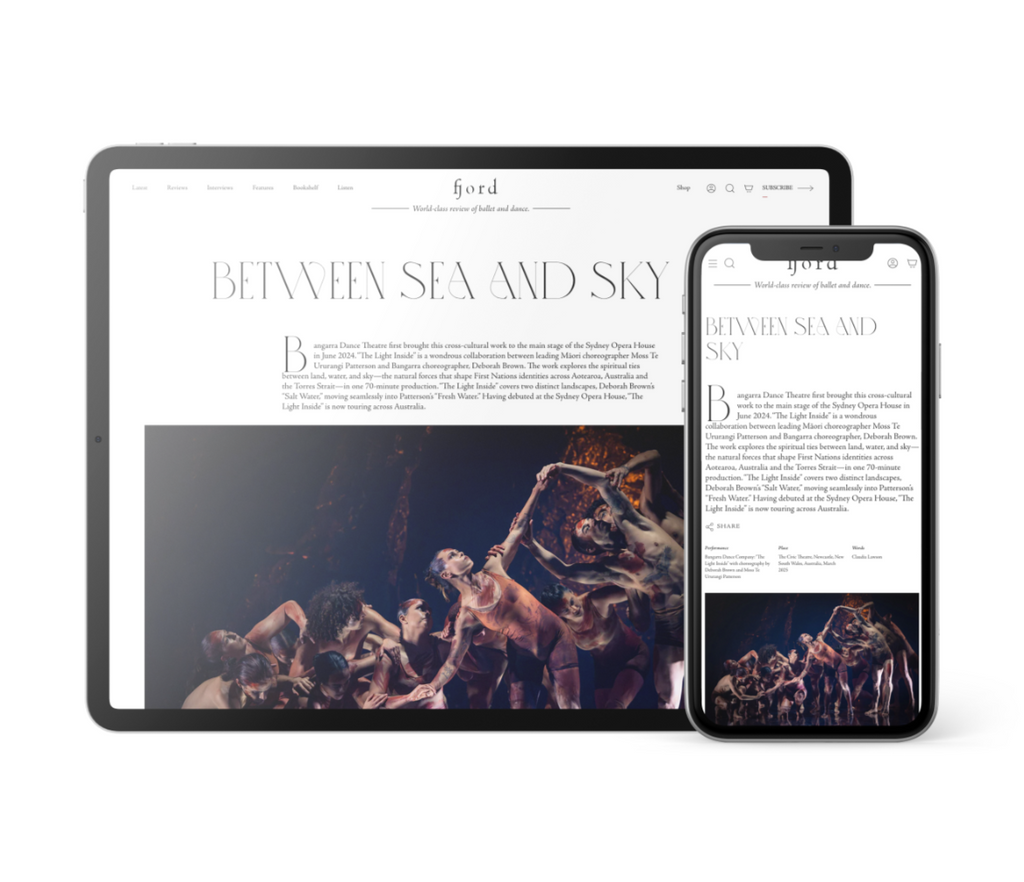Ultimate Release
Perhaps not since Mikhail Fokine’s 1905 iconic “The Dying Swan” has there been as haunting a solo dance depiction of avian death as Aakash Odedra Company’s “Songs of the Bulbul” (2024).
Continue Reading
World-class review of ballet and dance.
In some ways, dance could be considered an extreme sport: it meets many of the same criteria, featuring (at times) high speeds, significant risk, and the potential for severe injury. French choreographer Rachid Ouramdane seeks to reinforce this parallel in his new work “Outsider,” which received its UK premiere at Sadler’s Wells on March 26th as part of Dance Reflections by Van Cleef & Arpels. Created for the Ballet du Grand Théâtre de Genève, the piece invites four extreme sports athletes on stage alongside the company in an effort to highlight the connections between their professions.
Performance
Place
Words



“Uncommonly intelligent, substantial coverage.”
Your weekly source for world-class dance reviews, interviews, articles, and more.
Already a paid subscriber? Login

Perhaps not since Mikhail Fokine’s 1905 iconic “The Dying Swan” has there been as haunting a solo dance depiction of avian death as Aakash Odedra Company’s “Songs of the Bulbul” (2024).
Continue ReadingDance, at its best, captures nuance particularly well, allowing us to feel deeply and purely. In its wordlessness, it places a primal reliance on movement and embodied knowledge as communication all its own. It can speak directly from the body to the heart, bypassing the brain’s drive to “make sense of.”
Continue Reading“Racines”—meaning roots—stands as the counterbalance to “Giselle,” the two ballets opening the Paris Opera Ballet’s season this year.
Continue Reading“Giselle” is a ballet cut in two: day and night, the earth of peasants and vine workers set against the pale netherworld of the Wilis, spirits of young women betrayed in love. Between these two realms opens a tragic dramatic fracture—the spectacular and disheartening death of Giselle.
Continue Reading
comments